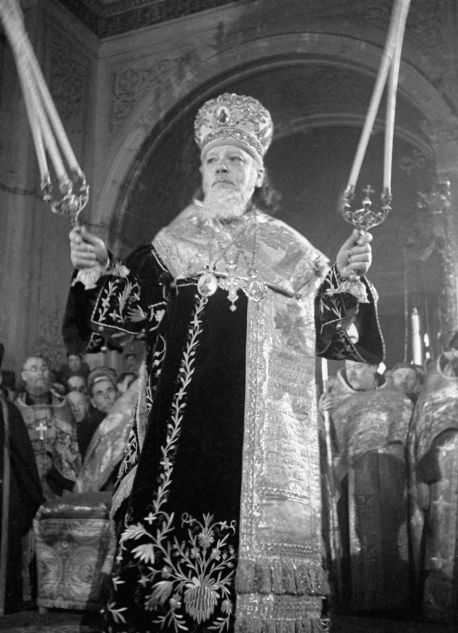On 19 April 1946, the first religious service since its reopening was held in the Main Cathedral of the Trinity Lavra of St. Sergius - the largest male monastery of the Russian Orthodox Church. The monastery dates back to the 14th century and, in its time, has served as a centre for religious, political, and cultural life, as well as having been pressed into service as a publishing house.
In March 1919, the Moscow Theological Academy was dissolved and on 10 November 1919, the presidium of the executive committee of the Sergiyevsky district decided to close the monastery. In 1920, by a resolution of the Council of People's Commissars, it was decided to open a historical and architectural museum on the site of the Lavra and 10 years later, Sergiyev Posad was renamed Zagorsk in honour of the revolutionary leader Vladimir Zagorsky.
However, on 4 September 1943, Joseph Stalin, realising the need to bring together all strands of society, met with the church hierarchy. At the end of the summer of 1945, Patriarch Alexy I of Moscow (Sergei Vladimirovich Simansky), having obtained approval from the state, began working on reopening the Cathedral of the Trinity-Sergius Lavra and the Moscow Theological Academy.
At the beginning of 1946, religious life began to revive in the Lavra, and the building regained its status as a monastery. And on 19 April, the first act of worship occurred in the Cathedral - Matins on Holy Saturday including carrying the Holy Shroud around the cathedral with the Easter liturgy being performed two days later on 21 April 1946 on Easter night.
It took a little longer for the Moscow Theological Academy to reopen, but in 1949 it resumed its activities inside the Lavra. The historical name Sergiyev Posad returned in 1991.
Source: Official website of the Trinity Lavra of St. Sergius
























